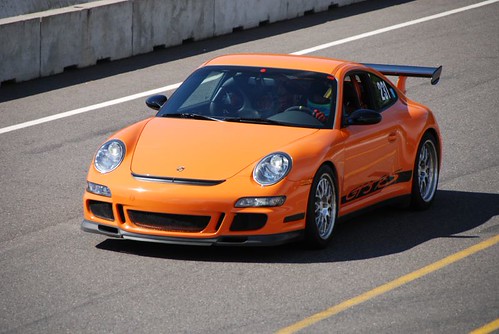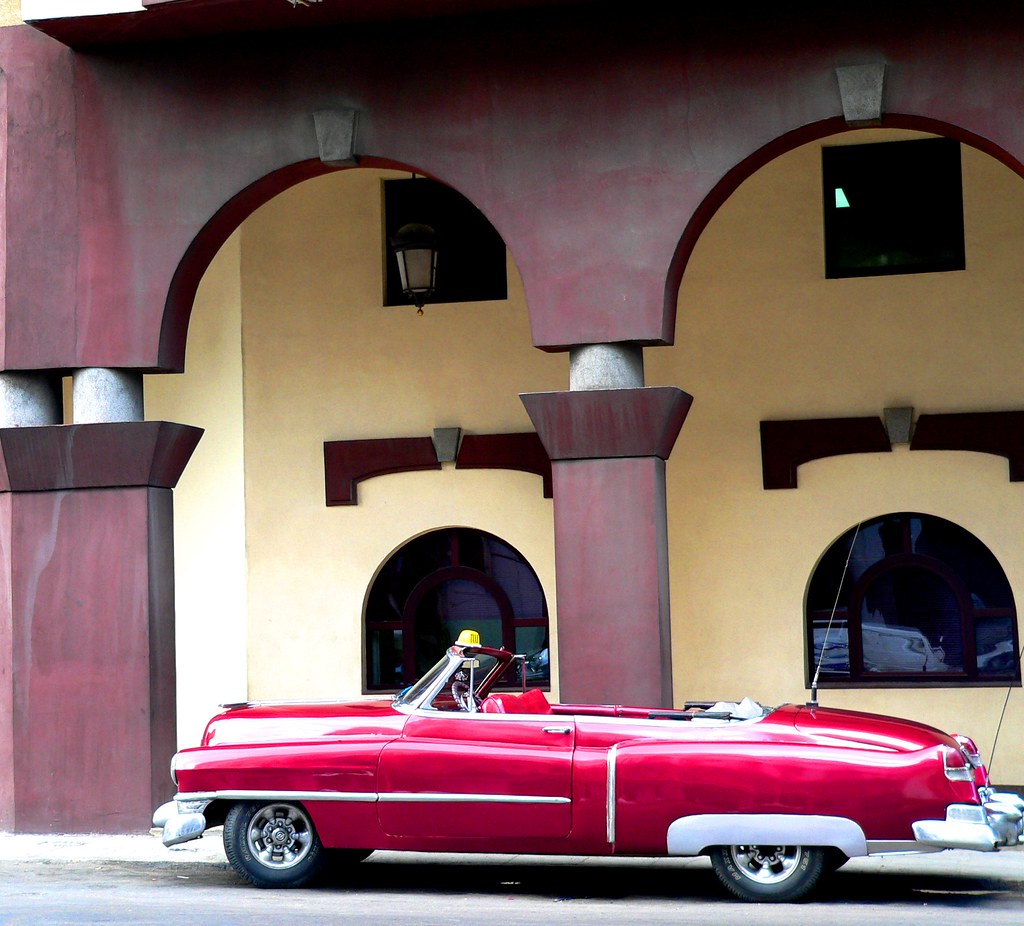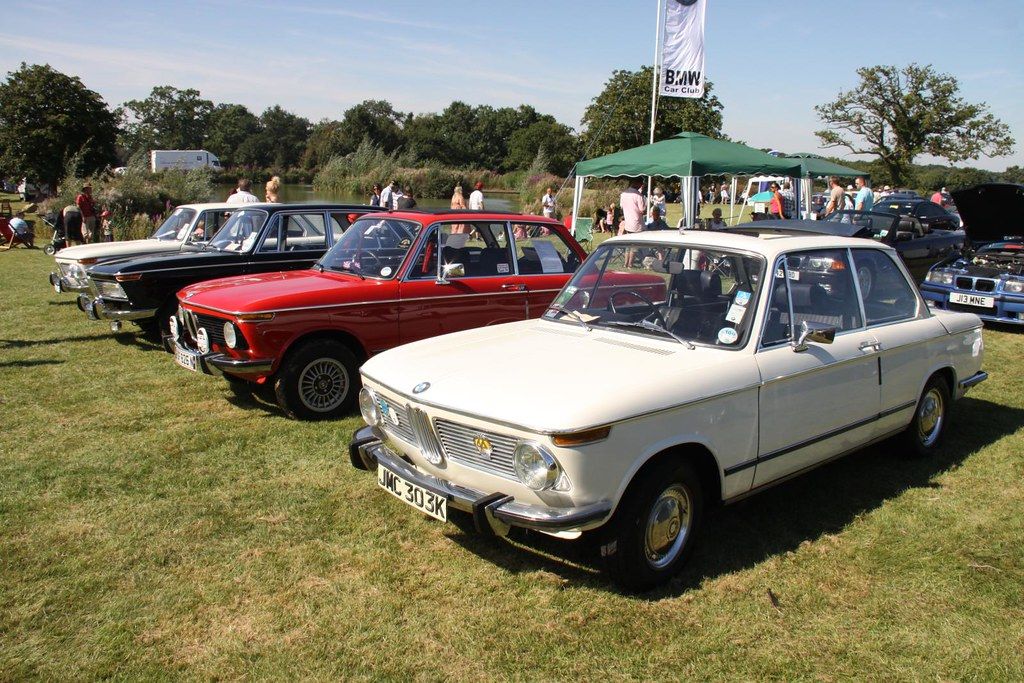
The history of Formula 1 is a tapestry woven with incredible – and at times, truly unbelievable – moments. Beyond the celebrated champions and groundbreaking technological leaps, the very stages upon which these dramas unfolded hold a special, often forgotten, significance. From six-wheeled race cars to unlikely title winners, the narrative of F1 is inextricably linked to the extraordinary race tracks that once pushed the boundaries of speed, skill, and sheer survival.
Today’s sleek, purpose-built circuits, with their vast run-off areas and meticulously engineered safety features, stand in stark contrast to the raw, untamed proving grounds of yesteryear. These early tracks were not just venues; they were crucibles, carved from public roads, forest paths, and even defunct military airbases. They demanded a different breed of driver, one capable of memorizing countless treacherous turns, navigating perilous surfaces, and confronting the ever-present specter of danger with every blistering lap. These forgotten arenas became the proving grounds where legends were forged, and the fundamental spirit of motor racing was defined.
Join us on an in-depth journey as we unearth some of the most unbelievable and obscure circuits that Formula 1 no longer races on. We’ll delve into their unique challenges, their fleeting moments in the Grand Prix spotlight, and the reasons they ultimately faded from the calendar, leaving behind only whispers of their formidable past. Each track tells a compelling story of an era when the sport was wilder, the stakes higher, and the line between triumph and tragedy often razor-thin.

1. **Circuit de Reims-Gueux: The French Countryside Crucible**Nestled within the serene French countryside, the Circuit de Reims-Gueux was far from tranquil on race weekends. This formidable 5.6-mile circuit, built on existing public roads, demanded not only immense courage but also a strategic mind. Its roughly triangular shape, defined by long, high-speed straights, meant that victory often hinged on mastering the subtle art of the slipstream, where drivers would tuck in behind their rivals to conserve momentum before making a decisive break. Patience, the ultimate virtue, was key to navigating its rapid sections and knowing precisely when to make a move.
Reims-Gueux quickly became a massive draw for the Formula 1 fraternity, not least because of the substantial financial incentives it offered. In an era where even the sport’s elite might expect to earn around $20,000 annually, the starting purse for Reims was a staggering $3,000 per entrant. This significant prize money transformed each French Grand Prix, hosted an impressive 11 different times, into a high-stakes spectacle, attracting the very best talent and guaranteeing fierce competition.
Beyond the purse, race organizers added a unique flair: cases of champagne were distributed for every minor accomplishment. Whether it was setting the fastest time of the day or being the first driver to achieve a lap above a certain speed, these bubbly rewards fueled the competitive spirit. Such incentives, combined with the inherently compelling nature of racing through high-speed straights and sweeping curves, ensured Reims-Gueux remained a firm favorite for drivers and fans alike, defining an era of raw, unadulterated speed. However, as F1 evolved, the limited safety measures inherent in its public road layout ultimately sealed its fate, leaving its iconic grandstands standing as silent, poignant reminders of a bygone era.

2. **Circuit Bremgarten: Bern’s Shadowy Forest Gauntlet**Before the modern era of Formula 1, Circuit Bremgarten in Bern, Switzerland, was a true mainstay on the early calendar, celebrated for its thrilling and unforgiving nature. This 4.5-mile track was a relentless collection of high-speed corners, devoid of the relief of long straights, as it s precariously through the dense Bremgartenwald forest. Its design was a testament to the era’s philosophy of pure, unadulterated road racing, where driver skill was paramount, and mistakes were met with immediate, often dire, consequences.
As one might expect from a circuit carved through a forest, the track was tightly lined with towering trees. These natural barriers presented a constant threat; straying from the racing line almost guaranteed a collision. But the trees also created another, more insidious danger: their thick foliage blocked the sunlight, casting much of the racing surface into deep shadow. This dramatic interplay of light and dark made judging speed and braking points incredibly challenging, adding an extra layer of complexity to an already demanding circuit.
Compounding these difficulties, the shaded sections of Bremgarten were particularly prone to pooling water if it rained – a frequent occurrence in the region. These treacherous wet patches, often obscured by shadows, made conditions even trickier, turning high-speed corners into perilous gambles. The circuit, for all its thrilling qualities, claimed the lives of several drivers, including the renowned Achille Varzi. Ultimately, it was not its inherent dangers but the tragic 1955 Le Mans disaster that led to Switzerland banning circuit racing altogether, permanently shuttering Bremgarten and transforming it from a formidable proving ground into a historical ghost.

3. **Pescara Circuit: F1’s Monstrous One-Hit Wonder**Before the devastation of World War II, the Circuito di Pescara was legendary, known as the host of the Coppa Acerbo. This name, however, was later changed due to its association with Giacomo Acerbo, a prominent fascist politician. When it finally appeared on the Formula 1 calendar in 1957, it did so under extraordinary circumstances, stepping in after both the Dutch and Belgian Grands Prix were unexpectedly canceled. What transpired was a singular, unforgettable event on what remains the longest F1 track ever used.
Clocking in at a staggering 25.800 kilometers (16.031 miles), Pescara was a true colossus, featuring two distinct 3.4-mile straights that allowed cars to achieve incredible speeds. Its sheer scale presented unprecedented challenges, not just for the drivers but also for the organizers. The circuit was so vast that it proved practically impossible to effectively collect tickets or charge fees for most spectators, underscoring its sprawling, untamed nature and the informal, almost communal, atmosphere it fostered among local enthusiasts.
Despite its historic length and the dramatic spectacle it presented, Pescara’s appearance on the F1 calendar was a one-off. The colossal layout, while thrilling, inherently posed immense safety fears, leading none other than Enzo Ferrari to controversially withdraw his team from the event. Stirling Moss ultimately won the solitary Pescara Grand Prix, etching his name into the annals of a unique F1 footnote. Understandably, the circuit was never used for Formula 1 again, lasting only a handful of years as a sports car venue before racing was totally discontinued in 1961, a testament to its raw, untamable character and the growing recognition of the need for safer racing environments.

4. **Ain-Diab Circuit: The Moroccan Tragedy**When discussions turn to Formula 1 races in Africa, the Kyalami circuit in South Africa often comes to mind. However, well before Kyalami graced the F1 calendar, there was the Ain-Diab Circuit, a remarkable, if tragic, venture located in Casablanca, Morocco. This circuit was a marvel of rapid construction, built from scratch in just six weeks in 1957, ready to host the inaugural Moroccan Grand Prix. Its fleeting existence on the F1 schedule would be both historic and haunting, leaving an indelible mark on the sport.
The Ain-Diab circuit itself was roughly rectangular in shape, skillfully utilizing both the existing desert road towards Azemmour and the picturesque coastal road that wound through the Sidi Abderhaman Forest. This unique combination offered drivers a varied and challenging experience, characterized by long periods of flat-out driving interspersed with quick corners and very few braking zones. Unusually for an F1 circuit, a significant portion of it was also located right next to the sea, providing a breathtaking, yet potentially distracting, backdrop to the high-speed action.
Unsurprisingly, given its rapid construction and the standards of the era, the circuit proved to be a highly dangerous one. Its sole F1 outing in 1958, while yielding a victory for the legendary Stirling Moss, was tragically overshadowed by a fatal incident. Moss’s Vanwall teammate, Stuart Lewis-Evans, suffered a fiery wreck during the race and later succumbed to his injuries. This profound tragedy sealed Ain-Diab’s fate; the circuit never returned to the F1 calendar, becoming a stark reminder of the inherent risks faced by drivers in Formula 1’s formative years and the irreversible consequences that could arise on circuits lacking modern safety provisions. It remains a poignant symbol of F1’s early, often brutal, development.

5. **Circuito de Monsanto: Portugal’s Perilous Park Circuit**In 1959, Portugal made its lone appearance on the Formula 1 calendar before the modern era, with the Circuito de Monsanto hosting the Portuguese Grand Prix. This unique street track was ingeniously constructed within Lisbon’s Monsanto Forest Park, creating a truly distinctive racing environment. What made Monsanto particularly challenging, and indeed infamous, was its racing surface, which was composed of a multitude of different materials and textures, making it incredibly unpredictable for the drivers battling for supremacy.
Motor Sport Magazine’s Denis Jenkinson, in his 1959 race report, provided an evocative description that perfectly captured the circuit’s formidable character. He noted: “The whole nature of the circuit is one of pure road racing with nothing in the way of banked corners or wide open spaces to make things easy for the drivers; in fact, just the opposite, with tricky cambers, braking to be done on curves, blind corners, tree-lined sections and all the normal difficulties met with in everyday motoring.” This expert commentary highlights the unyielding nature of Monsanto, a track that offered no quarter and demanded absolute precision.
Stirling Moss, ever the master of challenging conditions, emerged victorious in that solitary 1959 race, a testament to his exceptional skill in navigating such a hostile environment. However, the combination of rough surfaces, dangerous blind corners, and the sheer unpredictability inherent in its design rendered Monsanto unsuitable for future F1 events. The track closed for good in 1971, marking it as a true one-hit wonder and underscoring the dangers of adapting public parks for Grand Prix racing. It stands as a vivid example of a circuit that, despite its potential charm, was ultimately deemed too perilous for the burgeoning sport.

6. **Sebring: The American Airbase Anomaly**Sebring International Raceway holds a unique and somewhat controversial slot in Formula 1 history, primarily for its role in hosting the first US Grand Prix that wasn’t the Indianapolis 500, in 1959. This circuit emerged from a series of rough outlines hastily sketched onto a defunct military airbase, a pragmatic solution born from the complex landscape of post-WWII American motorsport. Its very existence was intertwined with an interpersonal conflict between the SCCA and the AAA, two rival sanctioning bodies, adding a layer of drama to its origins.
Sebring gained significant legitimacy when, in a pivotal move, street circuits were banned across the United States. At that time, almost every notable track, from Watkins Glen to Road America, relied on public roads. This unexpected legislative shift positioned Sebring as the sole road course situated on private property, at least until local communities successfully lobbied to revive their favorite circuits. This exclusivity briefly elevated Sebring’s status, making it a crucial, if reluctant, proving ground for F1 in America.
Despite its historical significance, Sebring was largely reviled by those who raced and visited it. Robert Daley, in his candid 1961 book *Cars at Speed*, offered nothing but scathing criticism. He lambasted its remote location, noting it was 90 miles from the nearest airport, making spectator arrival possible only by car. Daley also derided the circuit’s flat, uninspiring layout and the local hotels’ practice of price gouging during race weekends. Looking at Sebring now, with its enduring endurance racing legacy, it’s almost impossible to truly envision that this rugged, utilitarian facility once hosted the sleek, sophisticated Grand Prix cars of Formula 1, underscoring its peculiar place in the sport’s global expansion.

7. **AVUS: Germany’s ‘Wall of Death’**Few circuits in Formula 1 history evoke as much awe and dread as AVUS (Automobil-Verkehrs- und Übungsstraße), the fearsome track that hosted the 1959 German Grand Prix. This unique layout, essentially a part of a public highway running through Berlin’s Grunewald forest, was composed of two exceptionally long straightaways linked by two truly terrifying turns. It was a minimalist design, prioritizing sheer speed above all else, and its stark simplicity belied the immense peril it presented to even the most seasoned drivers.
At the north end of the track lay its most infamous feature: the so-called “Wall of Death.” This was a brutally steep, highly banked turn, boasting a whopping 43-degree incline. Paved with bricks and, astonishingly, featuring no retaining wall at its summit, it was a test of ultimate commitment. Drivers were forced to take the turn at incredibly high speeds to withstand the banking and avoid sliding down. Yet, push too hard, and the consequence was horrifyingly clear: a complete departure from the track, sending car and driver hurtling off the edge into the unknown.
The inherent dangers of the ‘Wall of Death’ were tragically underscored during that very Grand Prix weekend when racing star Jean Behra was killed in a support race, doing precisely what every driver feared. This profound loss cemented AVUS’s reputation as a lethal circuit, and it was, unsurprisingly, never included on the F1 calendar again. Robert Daley, in his 1961 book, captured the collective sentiment, stating drivers unequivocally hated AVUS. Stirling Moss famously branded it a “dump,” while Daley himself described it as a “freak track” and a “travesty,” solidifying its legacy as one of F1’s most bizarre and dangerous experiments, a testament to an era where raw speed often trumped safety concerns in the pursuit of spectacle.
Our journey through Formula 1’s forgotten frontiers continues, revealing even more circuits where history was made and peril often lurked just beyond the racing line. These were the unconventional proving grounds that tested the mettle of drivers and machines, pushing the very definition of what a Grand Prix circuit could be. From the shadow of a volcano to the stark layout of a temporary car park, these tracks each tell a unique story of F1’s wilder, less polished past, an era where innovation and danger walked hand-in-hand.

8. **Nürburgring: The Legendary Beast and its Forgotten Loop**While the Nürburgring Nordschleife remains legendary, its full, original configuration, particularly the lesser-known Südschleife, exemplifies the extreme challenges of early Formula 1. This winding, dangerous track, a daunting 14.2 miles long, regularly hosted F1 events intermittently between 1951 and 2013, holding a kind of revered status in motorsport. Its sheer scale and complexity made it a true test of a driver’s ability, pushing the limits of memorization and control.
Back in its heyday, the Nürburgring boasted over 170 curves per lap, a staggering number that strained a driver’s capacity to recall the nuance of each turn. The track surface itself was famously laden with bumps, winding precariously through the forested mountainside of the Rhineland. It was such a notoriously difficult circuit that, as recounted in Robert Daley’s 1961 book *Cars at Speed*, Stirling Moss claimed “only 30 drivers in the world are skilled enough to race at Le Mans or the Nürburgring.”
The Nürburgring complex originally included the Südschleife, a southern loop that formed part of this formidable challenge. While the Nordschleife is widely remembered, the Südschleife is often forgotten, a relic of a time when circuits were designed with less emphasis on safety run-off. Formula 1 last ran on the full, combined circuit in 1976, an event tragically immortalized by Niki Lauda’s near-fatal accident. This profound incident cemented concerns over safety, ultimately forcing the sport to move towards shorter, safer venues and relegating the Südschleife to history, eventually to be covered by the modern Grand Prix circuit.
The evolution of the Nürburgring, from its full, terrifying original layout to the safer, modern Grand Prix circuit, perfectly encapsulates F1’s ongoing struggle and eventual triumph in prioritizing driver safety. It stands as a powerful symbol of an era when circuits were largely untamed, and the Nürburgring, in its complete, fearsome glory, was arguably the ultimate proving ground for the bravest and most skilled drivers of its time.
9. **Circuit de Charade: France’s Volcanic Embrace**Circuit de Charade, sometimes known as Clermont Ferrand, stands out as one of the most absurd and breathtaking race tracks in Formula 1 history. This 8.055-kilometer circuit twisted around the base of the Puy de Dôme, an extinct volcano, offering a dramatic and incredibly challenging backdrop for Grand Prix racing. Its unique topography and relentlessly sinuous layout made it a truly singular experience for drivers and spectators alike.
The track’s design was a relentless series of sharp turns and dramatic elevation changes, a constant assault on the senses and the physical endurance of the drivers. In fact, this never-ending slew of corners proved so demanding that, in 1969, drivers like Jochen Rindt openly suffered from severe motion sickness during the race. It was a circuit that offered very little respite, demanding absolute focus and incredible stamina from start to finish.
However, the very nature of hugging a volcano ultimately sealed Charade’s fate. In 1972, the inherent dangers of the natural environment became tragically apparent. No fewer than 10 drivers suffered tire punctures due to falling rocks, an alarming frequency that highlighted the circuit’s fundamental flaws. The most harrowing incident saw Helmut Marko blinded when a rock embedded itself in his eye mid-race, a stark and horrific reminder of the risks.
Following Marko’s life-altering injury and the widespread rock-related punctures, the track was definitively deemed a danger and promptly removed from the F1 calendar. Charade, for all its natural beauty and challenging flow that drivers loved, became another casualty in the sport’s burgeoning awareness of safety, ending its brief but dramatic F1 chapter after only four Grand Prix appearances.

10. **Scandinavian Raceway (Anderstorp): Sweden’s Brief F1 Chapter**Far from the traditional European heartlands of motorsport, the Scandinavian Raceway, more commonly known as Anderstorp, was Sweden’s proud, if short-lived, contribution to the Formula 1 calendar. This circuit, located in the municipality of Gislaved, last hosted a Grand Prix in 1978, carving out a unique place in F1 history with its distinctive design features, particularly its long straight which famously doubled as an aircraft runway.
Anderstorp represented an attempt to bring Formula 1 to new territories, providing a home for the Swedish Grand Prix. The circuit’s layout, incorporating elements of an active airfield, offered a blend of high-speed sections and more technical corners, presenting a novel challenge for the drivers of the era. Its presence on the calendar allowed local hero Ronnie Peterson to achieve significant recognition on home soil, contributing to some memorable races during its tenure.
Despite its unique charm and the excitement it generated, Anderstorp’s time on the F1 calendar was destined to be fleeting. The circuit ultimately succumbed to a combination of financial challenges and dwindling interest from both organizers and the wider F1 community. These factors made it unsustainable for the demands of hosting a Grand Prix, eventually pushing it off the calendar, leaving behind only whispers of Ronnie Peterson’s glory days and a fascinating chapter in F1’s geographical expansion.
Our retrospective journey through these obscure circuits offers a profound look into the formative years of Formula 1. These tracks, often born of necessity or local ambition, tested the very limits of human and mechanical endurance, revealing a sport far wilder and less refined than what we see today. They serve as poignant reminders that while some venues become icons, others, despite their unique stories and fleeting moments of glory, are destined to fade into the annals of history, becoming the forgotten proving grounds where legends were unknowingly forged and the relentless march of progress, particularly in safety, paved the way for the F1 of tomorrow.




